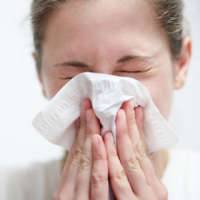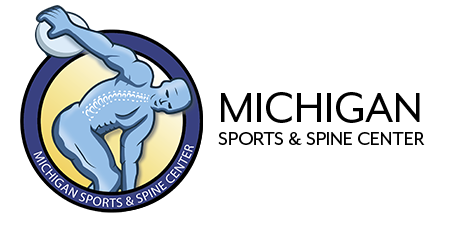Exercising When You Have A Cold

Best and Worst Exercises to Do When You Have a Cold
Your workout Rx
If you’re feeling under the weather, exercise may be the last thing you feel like doing—and it’s true that when your body’s already under a lot of stress, making it do more work isn’t always a good idea. But in some cases, light to moderate activity may actually help you feel better.
If your symptoms are above the neck—sneezing, sinus pressure, stuffy nose—then breaking a sweat is generally considered safe. Listen to your body, and consider the following best (and worst) workout options.
Best: Walking
Having a cold may compromise your energy levels, so you may not feel up for intense physical fitness. But even just a 20-minute walk can help you reap the benefits of regular exercise, and it may help improve your cold symptoms, as well.
“If your sinuses are plugged up, walking will stimulate you to take deep breaths and can help open up those passages. (Of course, if you discover that walking—or any type of physical exertion—makes you feel worse, rather than better, stop and focus on getting rest, instead.) Although there’s little research on how exercise can affect the duration of a cold, studies have shown that people who regularly work out tend to get sick less, overall.
Best: Jogging
As long as jogging is part of your regular routine, there’s no reason you need to skip it just because of a mild head cold. “Running is a natural decongestant, and it can help clear your head and feel normal again.” You can scale back the intensity of your normal run, since your body is already working in overdrive to help fight off infection. And the American College on Exercise recommends holding off completely if you’re experiencing flu-like or below-the-neck symptoms, like nausea or vomiting.
Best: Yoga
The body releases the stress hormone cortisol while it’s fighting infections like the common cold, and research suggests that stress-relieving techniques—such as yoga and breathing exercises—may help boost immunity.
Worst: Endurance Running
Training for a marathon? Skip this weekend’s long run if you’re sick—even if you’re already getting over, or just feel yourself coming down with, a cold. “In general, regular exercise stimulates the immune system and helps keep us healthy,”
Worst: Machines at the Gym
In addition to how you exercise when you’re sick, it’s also important to consider where you exercise: “If your workout involves going to the gym and being in close contact with other people, you need to ask yourself if you’d want someone else with your symptoms doing the same thing, If you would not like the person next to you on the treadmill or who finishes before you on the elliptical to be sneezing and coughing and wiping their nose, than do your fellow gym mates a favor and do a lighter workout at home, instead.” Germs can spread easily on machines and in the locker room, so it’s best to stay away while you’re contagious.
Worst: Lifting Weights
Your strength and performance will likely be diminished while you’re battling a cold, says Besser—especially if you’ve missed out on quality sleep—putting you at increased risk for injury while trying to lift heavy equipment. Plus, the muscle strain required to lift weights can cause sinus pressure and headaches to feel even worse, Still don’t want to skip a strength workout? Do it at home, where you won’t be spreading germs and sharing your sickness with other weight lifters, and give yourself a break by using lighter dumbbells than usual.
Worst: Anything Outdoors in the Cold
Working out in freezing temps may be detrimental to some people battling cold symptoms, but not for the reason you may think. Contrary to popular belief, cold weather in itself will not lower immunity or cause you to get sick—not even if you go outside without a coat or you sweat so much your hair gets wet.
What can happen, however, is that cold, dry air can restrict or irritate airways—triggering a runny nose, coughing, or asthma-like symptoms. If you find that you are sensitive to these conditions, winter activities like skiing, snowboarding, or snowshoeing might be even more difficult when you have a cold.
Best or Worst: Swimming and Biking
Like walking and jogging, other forms of moderate cardio can help clear congestion and boost energy levels, but they won’t work for everyone. “It’s really a matter of personal preference, what type of symptoms you have, and what your normal routine is like,” Swimming, for example, can feel quite refreshing, and may help open up airways. (For people who suffer from allergies, it can also help by washing away pollen and dust.) But some people may find it difficult to breathe while congested, or may be irritated by chlorinated waters. Biking can also be a nice, moderate exercise, but may dry out nasal passages and increase symptoms like sore throat and runny nose.
Plus: What about allergies?
Sometimes, what people think of as recurring cold symptoms—sneezing, headaches, nasal congestion—are actually allergies in disguise. “If you find that you are seeing those symptoms come on at the same time each year, you might want to ask your doctor about getting tested,” Allergies to pollen and ragweed can make outdoor exercise difficult in the spring and fall, while allergies to dust, mold or harsh cleaners can be triggered by workouts at the gym or in other enclosed spaces. If you can pinpoint the cause of your symptoms, an antihistamine or other treatment can likely help you get back to your normal life—and your normal workout routine.
Boost your immunity
They say you are what you eat, so it makes sense that eating healthy foods can help you stay, er, healthy.
“You can’t underestimate the importance of good nutrition when it comes to…your immune system,”
“Vitamins, minerals, antioxidants—these are what keeps your body strong, and without them you’re not giving your body the edge it needs to ward off infection.” And we’re not talking just fruits and vegetables: Foods from every food group are represented here. Make them a part of your diet for your best defense against colds and flu.
Acute Injuries:
- bruises/contusions
- puncture wounds/cuts
- ligament injuries
- injuries to tendons
- strains
- fractures
- bone dislocation
Overuse injuries:
- Achilles tendonitis/tendinosis – the breakdown of soft tissues around and in the Achilles tendon that connects the calf muscles to the heel bone.
- Stress fracture – a hairline crack in the bone.
- Retrocalcaneal bursitis – inflammation of the bursa, which causes rawness, sensitivity and swelling of the back of the heel and the ankle.
- Plantar fasciitis – inflammation of the thick tissue on the bottom of the foot, which in turn causes pain when walking.
- Metatarsalgia – an ache in the front (ball) of the foot.

TREATMENT:
There are several treatment options for foot and ankle pain. Be sure to contact Michigan Sports & Spine Center or another specialist in order to receive the proper diagnosis and receive the proper treatment plan.
Physical Therapy/Exercise Training:
- The combination of exercise training and physical therapy commonly includes stretching, strengthening and low-impact aerobic exercises.
- A physical therapist can design a regimen that helps to reduce pain and discomfort and strengthen the muscles that affect your ankles, therefore getting you back on track.
Injections:
- Trigger point injections – a procedure used to treat painful areas of the muscle that contain trigger points, or knots of the muscle that develop when muscles do not relax. Involves the injection of medication directly into the trigger point.
- Facet injections – entails injecting a small amount of local anesthetic and/or steroid medication, which anesthetizes the facet joints and blocks pain.
Weight Loss and Exercise:
- Losing extra weight can also help to lose the pain, and increase your comfort level and your quality of life.
- Exercise can aid in achieving your weight loss goals, and at the same time strengthen your muscles and decrease pain.
Massage Therapy:
- A deep massage will decrease muscle spasms, fight inflammation and encourage relaxation.
Osteopathic Manual Medicine/Manipulations:
- Relieves pain by reducing pressure on sensitive structures, increasing flexibility, improving blood flow and decreasing muscle tension.
Acupuncture:
- Based on the principles of traditional Chinese medicine, acupuncture involves sticking very thin needles into specific energy points within the muscle/skin in an effort to diminish inflammation, pain and discomfort.
- Acupuncture is successful because it helps to release endorphins and serotonin, which act to reduce pain.
RICE:
- Rest your ankle or foot. Don’t walk or put weight on it.
- Ice your ankle or foot with an ice pack for 20-30 minutes, several times a day.
- Compress and support your foot or ankle with bandages or ace-wraps.
- Elevate you foot or ankle for 48 hours. Keep your ankle/foot propped up on pillows about your heart level.
Sources: WebMD
ABOUT MICHIGAN SPORTS & SPINE CENTER:
We’re innovative leaders utilizing cutting-edge technologies such as musculoskeletal ultrasounds, PRP, stem cell treatment, and other innovative procedures. Michigan Sports & Spine Center is committed to resolving your pain, not simply masking it. We treat the whole body, not just the injury, and perform preventative treatment so your injury doesn’t come back. Our studies prove that Michigan Sports & Spine Center has patient success rates much higher than the national average. We treat everyone from high-profile athletes to your neighbor next door. Our primary focus is getting our patients back into the game of life!
